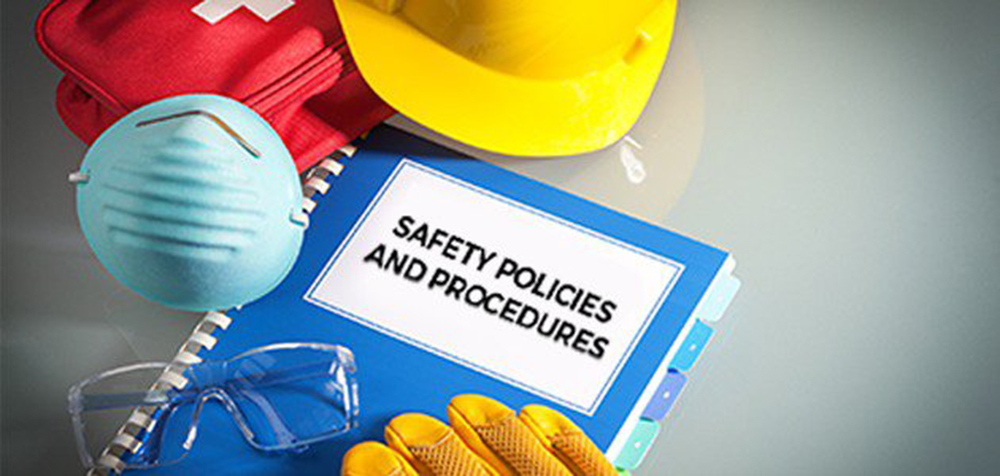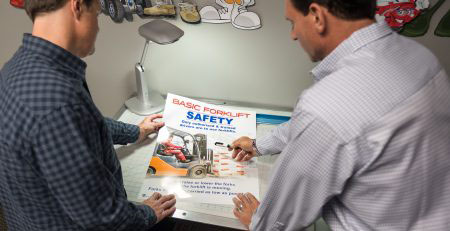To ensure you are including the safety topics that are most likely to have a positive impact on your workplace, start by taking these key action steps:
Review incident trends from the previous 24 months. Prior safety incidents will point you in the right direction of the opportunity areas for building a safer workplace. These incidents should lead you to your primary safety topics for the year ahead.
Supplement your primary safety topics with other relevant themes that support your internal communication goals. For example, even if your business hasn’t had any documented COVID-19 incidents, you will likely want to reinforce safety protocols related to COVID-19 throughout the year.
Organize and prioritize your topics throughout the year. While there is no hard and fast rule concerning how often you should switch topics, it’s generally recommended to rotate your safety themes monthly. You may choose a specific theme for each month based on national observances or your internal company priorities. For example, you may choose to provide mental health and wellness tips throughout the month of May for Mental Health Awareness Month.
How to Share Your Communication
Now that you have determined and prioritized your year’s topics, it is important to consider how you will deliver these materials to maximize your communication efforts. Your methods should maximize both engagement and improved performance by your workforce.
Look at your demographic. If the average age of your employees is around 40, moving to a digital platform could be the perfect fit for your organization. Digital signage not only increases engagement, but it will also make it much easier for you to effectively communicate throughout your entire organization.
Decide who will research and design content for your communication. To keep messaging fresh and maintain engagement, you should plan to contribute 12-15 new topics or messages a week to make substitutions as previous content falls out of rotation. You will need to identify one or more individuals or resources within your organization that can assist you in this area. If you don’t have teammates from your marketing or communications teams that are ready to support your safety communication initiatives, consider utilizing existing digital templates or professionally developed libraries from a workplace focused digital signage provider.
Leveraging resources for existing topical content and templates. For professionally designed safety content and ready-to-use templates, look for a digital signage provider who understands the key points of communication that will resonate with a successful workplace safety culture.
Set consistent standards for sharing file types or media formats. Take time to look through your existing training materials and make note of the most commonly used file formats. If you already use a variety of material formats, use an advanced digital signage software that can easily accommodate all popular document file types. Additionally, using digital signage technology is ideal not only for displaying your video content, but also for leveraging powerful platforms such as YouTube to provide added engagement.
Identify stakeholders to help with managing and scheduling monthly content. Managing and scheduling the content you want to share shouldn’t be an overwhelming task. A comprehensive digital signage solution can make it easy to collaborate with stakeholders across your organization and make your communication planning much easier - even if you are planning weeks, months, or even the entire year in advance.
Connect your current safety and production dashboards to share important KPI’s and other critical performance information. In addition to sharing your own content, look for opportunities to integrate management dashboards that can share critical safety and production KPI’s with your workforce on a real-time basis. If you’re not sure how to accomplish this, leveraging the help of an experienced digital signage partner can get this done.
Bringing Your Safety Communication Plan Together
Once your safety team has identified and prioritized safety topics for the year, it’s time to determine the digital signage software that will help you not only achieve, but exceed your organization’s safety goals. Here’s where an innovative digital signage solution can have you sharing your communication in minutes.
Not all digital signage solutions can adequately serve a workplace’s communication needs. But at Indigo, we have spent over 25 years dedicating our careers to engaging highly sustained safety cultures. Ask our experts for guidance on the best approach for delivering your safety communication for maximum impact.




